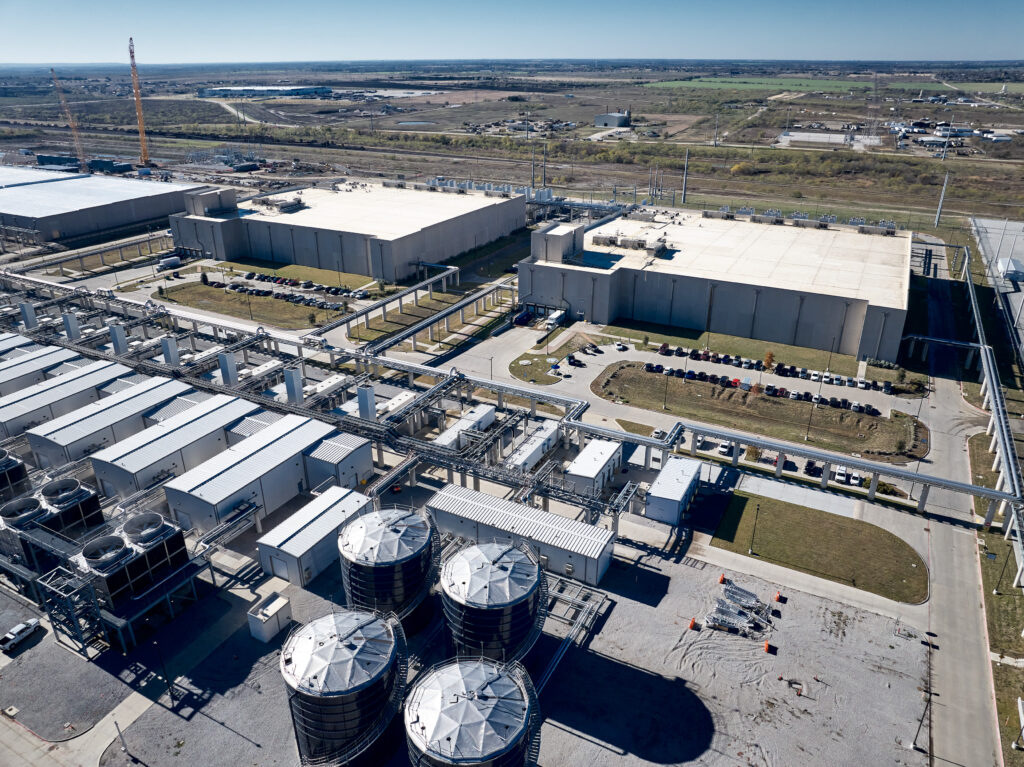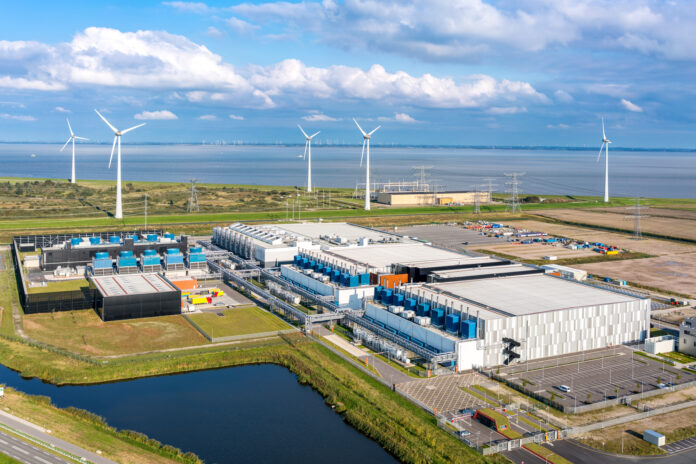In Google’s 10th annual report, the company said it reduced emissions even as its data center electricity consumption rose by 27% in one year
‘Tis the season for environmental sustainability reports, it seems, with the GSMA recently releasing its Mobile Net Zero report on telecom operators’ sustainability progress and Google putting out the tenth annual edition of its company environmental report.
The good news across both of those reports? Emissions are down, as telecom and tech companies purchase more clean energy to meet their growing needs. The downside is that those power needs are growing so fast that they need to pick up the pace if they actually want to make progress on sustainability. Available power isn’t keeping up with demand, creating a major bottleneck for cloud, AI and data center proliferation.
The Google environmental report puts numbers out (though some researchers have questioned whether they are accurate), but it also illustrates some of the company’s efforts to push against the prevailing trends in energy type and availability.
Here are nine key takeaways from the 2025 report.
–Power use grew by 27% in just one year. It was up 17% the prior year and doubled over the past four years. The increase should come as no surprise, with the insatiable demand for power-hungry data centers and the scramble across industries to develop and adopt even more power-intense artificial intelligence-based applications. However, the company took pains to note that its “growing electricity needs aren’t solely driven by AI. The accelerating growth of Google Cloud, continued investments in Search, the expanding reach of YouTube, and more, have also contributed to this overall growth.”
–Increased efficiency offset some impacts. Google says that its data centers “are some of the most efficient in the world” and are delivering more than six times the computing power per unit of electricity than they did five years ago. The company credited its hardware engineering progress in creating chips like its Ironwood Tensor Processing Unit (TPU), which it says is nearly 30 times more power efficient than its first Cloud TPU from 2018.
–Emissions are down. Google calculated that it reduced data center emissions by 12% despite the overall increase in data center energy usage, meaning that it is successfully shifting toward less carbon-intense energy sources.
– Water usage was up 28% in one year. Data centers also rely heavily on water use for cooling purposes. Between 2023 and 2024, Google saw its water usage rise 28% to 8.1 billion gallons — which it says would be the equivalent of annual watering for 54 golf courses in the arid U.S. Southwest. It’s trying to balance out those impacts with water stewardship projects that it says helped to safeguard 4.5 billion gallons of water, or about 64% of its usage.
–Clean energy purchases and projects hit a record high. Last year alone, Google said that it signed 60 new clean energy generation contracts to purchase more than 8 GW. That number is the largest annual total in its history and twice what is contracted for the previous year. Google has purchased renewable energy matching 100% of its usage since 2017, and it is working toward its “climate moonshot” goal of 24/7 carbon-free energy (CFE). In 2023, it was at 64% CFE overall and it increased that percentage by 2% to 66% — but notably, some of its data center regions achieved at least 80% CFE.
The company estimated that once the projects agreed upon in 2024 are operational, they “could generate nearly four times more electricity than our incremental load growth from 2023 to 2024,” as it tries to stay ahead of its energy needs.
–The clean energy project pipeline is still long. Even as it signed 60 new contracts, Google said that last year, more than contracted 25 clean energy projects came online. Some of those dated back to contracts signed in 2019, pointing to just how long it can take to activate clean energy generation — and why some data center builders are resorting to the use of gas and other conventional sources due to the intense pressure to build and power DCs as quickly as possible.
–Regionalized clean energy is seeing progress. Along those lines, one of the sticking points with buying renewables as part of a cleaner-energy strategy is local or regional availability. Google said that it is making progress, but it’s uneven — and regional clean energy sources are particularly hard to come by in APAC, where Google’s regional CFE percentage was only 12%, compared to 70% in North America and 92% in Latin America.
The company is making the most clean energy purchases in North America — which makes sense, because that’s also where the company uses the most energy. Between 2010 to 2024, Google signed agreements for over 17.3 GW of clean energy in North America, more than 4.5 GW in Europe, more than 400 MW in Latin America and more than 300 MW in APAC.
–Data centers could become grid assets. Google talked about data center flexibility and the concept that data centers could not only consume power, but help to balance power loads. The power grid is already becoming increasingly two-way, with distributed generation; data centers could potentially be positioned as grid assets and would have the ability to restrict or move processing loads based on local demand, something that startup Emerald AI has already successfully demonstrated. Data center operators (including Google) already want to increase renewable and on-site energy generation and energy storage, and 37% want to monetize their energy assets by selling power, according to power management company Eaton.

–Google is also asking its suppliers to prioritize clean energy. Supply chain sources of emissions are one of the trickiest sustainability challenges to deal with, because they are out of companies’ direct control — but they still have influence, if they care to use it. Google has implemented a Google Clean Energy Addendum (CEA) that asks suppliers to commit to a 100% clean electricity match for the electricity they use to manufacture Google products. The company said that “many key suppliers” have signed its CEA as of the end of last year, and it is investing in clean energy in the Asia Pacific region through a partnership with BlackRock, to help boost alternative energy sources for chip and hardware manufacturers in the region.
The company’s report focused on the positives, but it also acknowledged the challenges. “While we remain committed to our climate moonshots, it’s become clear that achieving them is now more complex and challenging across every level,” the company concluded in the report. “Even though we’ve successfully reduced our data center energy emissions, supply chain emissions have risen. Additional external factors—largely outside our direct control—are converging to create significant uncertainty, including the slower-than-needed deployment of CFE technologies, AI’s energy demands, policy uncertainties, resource-challenged markets, and more.”
Read the full 2025 Google Environmental Report here.

